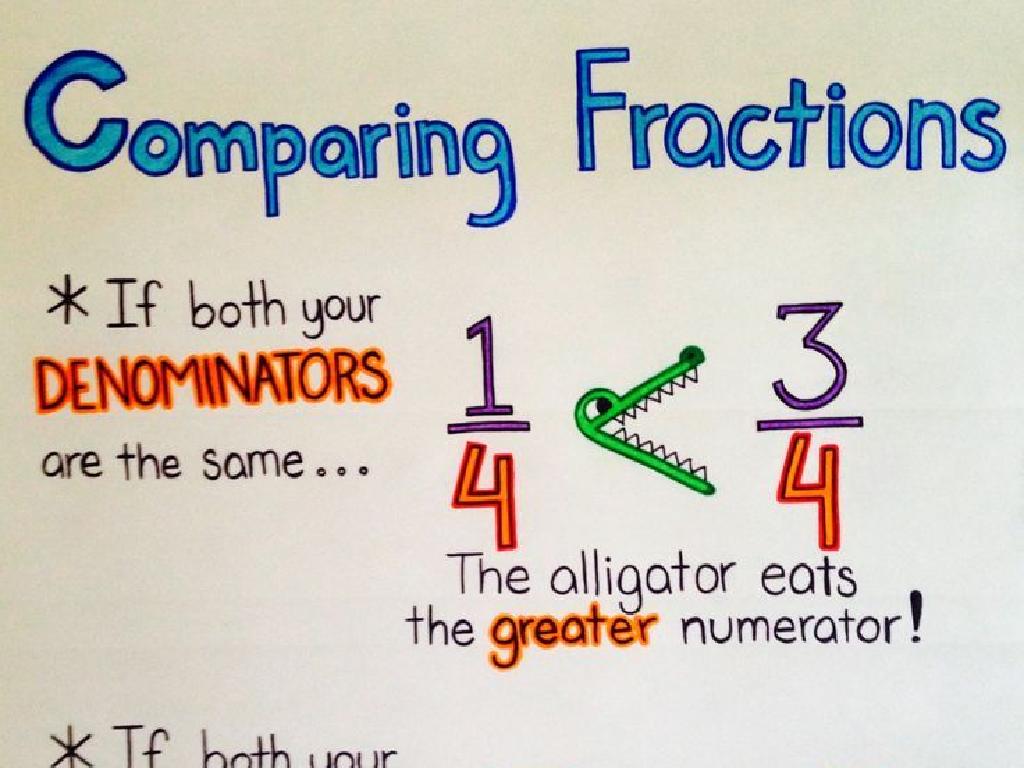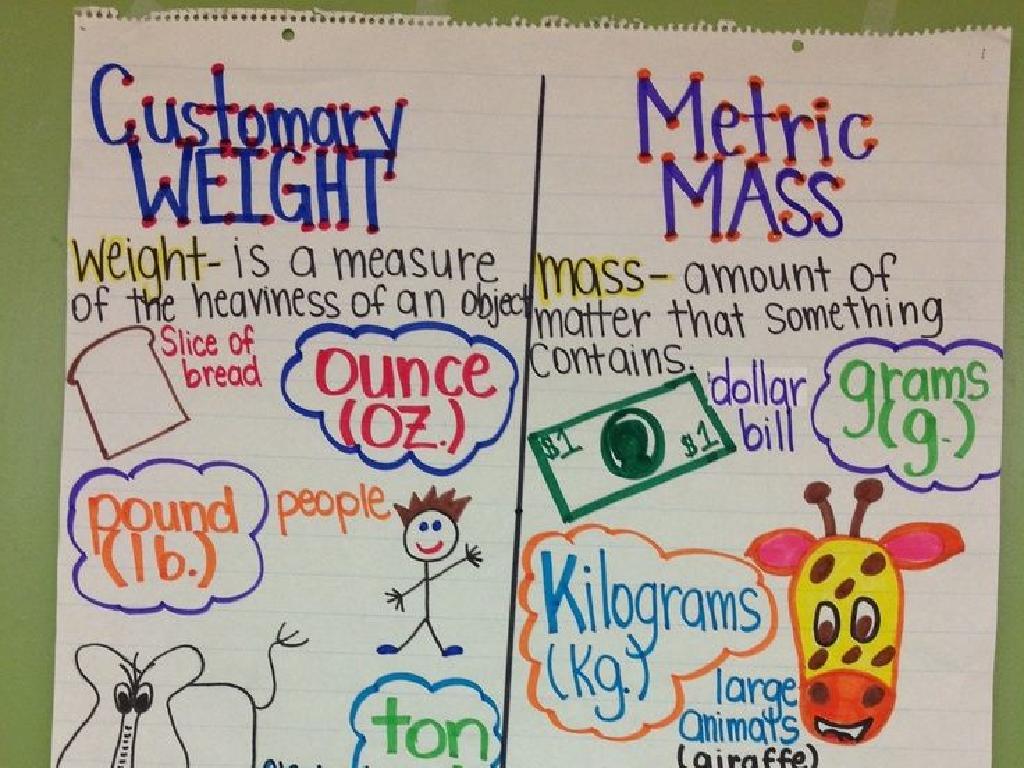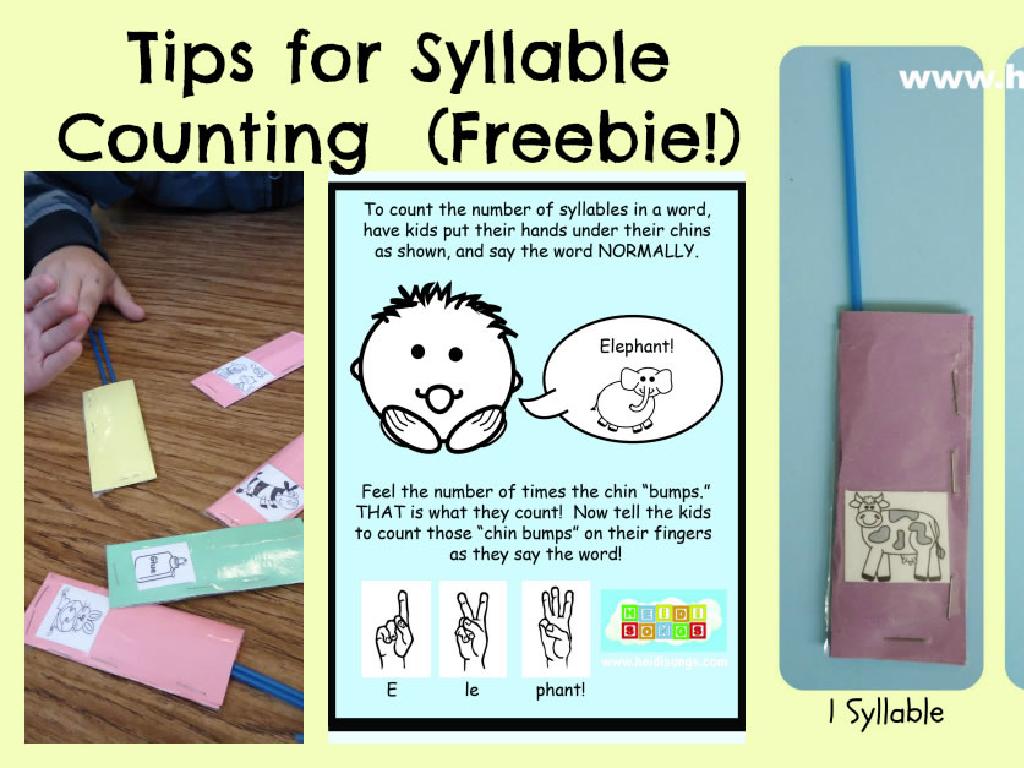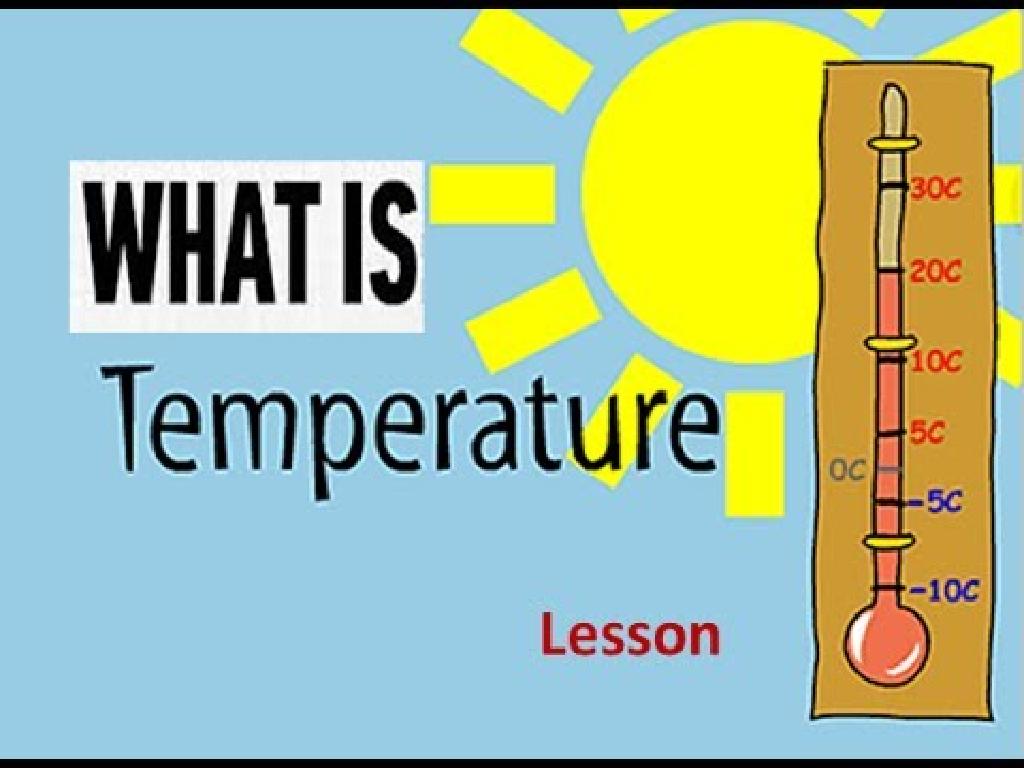Multi-Step Word Problems
Subject: Math
Grade: Sixth grade
Topic: Mixed Operations: Whole Numbers
Please LOG IN to download the presentation. Access is available to registered users only.
View More Content
Welcome to Multi-Step Word Problems!
– Importance of word problems
Word problems apply math to real-world situations, enhancing critical thinking.
– Identifying operations
Look for keywords: sum, difference, product, quotient to determine operations.
– Steps to solve problems
Read carefully, write equations, solve step-by-step, and always check your work.
– Practice and patience
|
This slide introduces students to the concept of multi-step word problems, emphasizing their relevance in applying math skills to everyday scenarios. It’s crucial to explain that solving these problems involves identifying the operations required by looking for keywords within the text. The steps to tackle these problems include careful reading, writing down the equations, solving each step methodically, and verifying the answers. Encourage students to practice regularly and be patient as they develop their problem-solving skills. Provide examples and guide them through the process, ensuring they understand each step before moving on to complex problems.
Understanding Multi-Step Word Problems
– Define multi-step word problems
– Problems requiring more than one step to solve
– Real-life examples of mixed operations
– Budgeting expenses, cooking recipes, or planning trips involve adding, subtracting, multiplying, or dividing
– Identifying multiple operations
– Recognizing the need for different math operations within one problem
– Strategies for solving complex problems
|
Multi-step word problems require students to use more than one mathematical operation to find the solution. It’s crucial to understand how to break down a problem into manageable steps and determine which operations to use. Real-life examples, such as managing a budget or following a recipe, can help students relate to the material. Encourage students to read the problem thoroughly, identify keywords that signal specific operations, and decide the order in which to perform these operations. Provide them with strategies like underlining important information, making a plan, and checking their work. This slide aims to build foundational skills for solving complex problems that they will encounter in higher math and everyday life.
Identifying Operations in Word Problems
– Review basic operations
– Addition, subtraction, multiplication, division
– Learn keywords for operations
– ‘Total’ for addition, ‘left’ for subtraction, ‘times’ for multiplication, ‘split’ for division
– Practice with sample sentences
– Identify operations in ‘Lily has 3 times as many apples as Tom’
– Understand multi-step problems
|
This slide aims to reinforce the understanding of basic operations and how to identify them in the context of a word problem. Start by reviewing addition, subtraction, multiplication, and division. Emphasize the importance of keywords that signal specific operations, such as ‘total’ for addition or ‘left’ for subtraction. Engage students with practice sentences to apply their knowledge, such as ‘Lily has 3 times as many apples as Tom’, where ‘times’ indicates multiplication. Encourage students to explain their reasoning for choosing an operation. This will prepare them for tackling multi-step word problems that require the use of more than one operation. The goal is for students to become comfortable with identifying and applying the correct operations when solving complex problems.
Solving Multi-Step Word Problems
– Read the problem carefully
– Grasp the context and details
– Understand the question asked
– What is the final answer you need?
– Determine operations and sequence
– Which math operations to use first?
– Solve the problem step by step
– Break down the problem and solve each part
– Check your work thoroughly
– Use inverse operations to verify your solution
|
This slide is aimed at guiding sixth-grade students through the process of solving multi-step word problems involving mixed operations with whole numbers. Start by reading the problem carefully to understand the scenario and details. Next, identify the specific question being asked to clarify the goal. Determine which mathematical operations are required and the order in which they should be applied. Solve each part of the problem in sequence, showing your work. Finally, check your solution by performing the reverse operations to ensure accuracy. Encourage students to practice this method with various problems to build confidence and proficiency in tackling multi-step word problems.
Multi-Step Word Problems: Example 1
– Read the problem as a class
– Identify necessary operations
– Determine if we need to add, subtract, multiply, or divide
– Discuss solution steps
– Outline the order of operations to tackle the problem
– Solve the problem together
– Use the steps to find the solution collaboratively
|
This slide is designed to guide the class through a multi-step word problem. Start by reading the problem aloud to ensure all students understand the context. Next, work together to identify which mathematical operations are required to solve the problem, such as addition, subtraction, multiplication, or division. Discuss with the class the logical sequence of steps needed to arrive at the solution, emphasizing the importance of the order of operations. Finally, solve the problem as a class, encouraging participation from students to contribute to each step of the solution. This collaborative approach helps students understand the process of solving complex problems and reinforces their problem-solving skills.
Multi-Step Word Problems: Collaboration Exercise
– Pair up and read the problem together
– Independently identify necessary operations
– Determine which math operations to use
– Collaboratively solve the problem
– Share ideas and combine steps for the solution
– Class review of the solution process
– Discuss different approaches and answers
|
This slide is designed to facilitate a collaborative learning experience. Students should first pair up and read the given multi-step word problem together to ensure understanding. Next, they should individually identify the operations involved, such as addition, subtraction, multiplication, or division, and outline the steps they think are needed to solve the problem. Afterward, partners will work together to solve the problem, combining their ideas and verifying each other’s work. Finally, the class will come together to review different solution methods and answers. This activity encourages communication, critical thinking, and peer learning. As a teacher, circulate the room to provide guidance and ensure that each pair is on the right track. Prepare to highlight different strategies used by students during the class review.
Class Activity: Solve Your Own Multi-Step Problem!
– Each group gets a unique problem
– Use learned steps to solve
– Present solution to the class
– Explain your reasoning
|
This activity is designed to reinforce students’ understanding of multi-step word problems involving mixed operations with whole numbers. Divide the class into small groups and provide each group with a different word problem. Encourage them to apply the problem-solving steps discussed in previous lessons, such as identifying the relevant information, deciding the order of operations, and carrying out the necessary calculations. After solving the problem, each group will present their solution and explain the reasoning behind their approach. This will help students articulate their thought process and learn from each other. Possible activities could include shopping scenarios, combining distances or times from different trips, or calculating the total cost of items with a given budget.
Wrapping Up: Multi-Step Word Problems
– Recap today’s key points
– Homework: 3 multi-step problems
– Apply today’s lesson to solve problems
– Encourage practice and questions
– Bring any questions to next class
– Keep practicing at home!
|
As we conclude today’s lesson on multi-step word problems, remind students of the strategies we’ve learned for tackling these problems, such as identifying keywords, breaking down the problem into smaller steps, and carefully performing operations in the correct order. For homework, students are to solve three multi-step word problems, which will help reinforce their understanding. Encourage them to practice further at home and remind them that it’s okay to have questions; they should feel comfortable bringing these to the next class for discussion. This will not only help them but also their classmates, as others may have similar questions.






